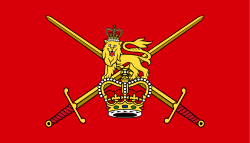This article needs additional citations for verification .(November 2025) |
| ||||||||||||||||||
| ||||||||||||||||||
This is a list of British Regular Army regiments as constituted as a result of the British defence white paper Delivering Security in a Changing World in 2004 and "Delivering Security in a Changing World Future Capabilities" in 2005.
